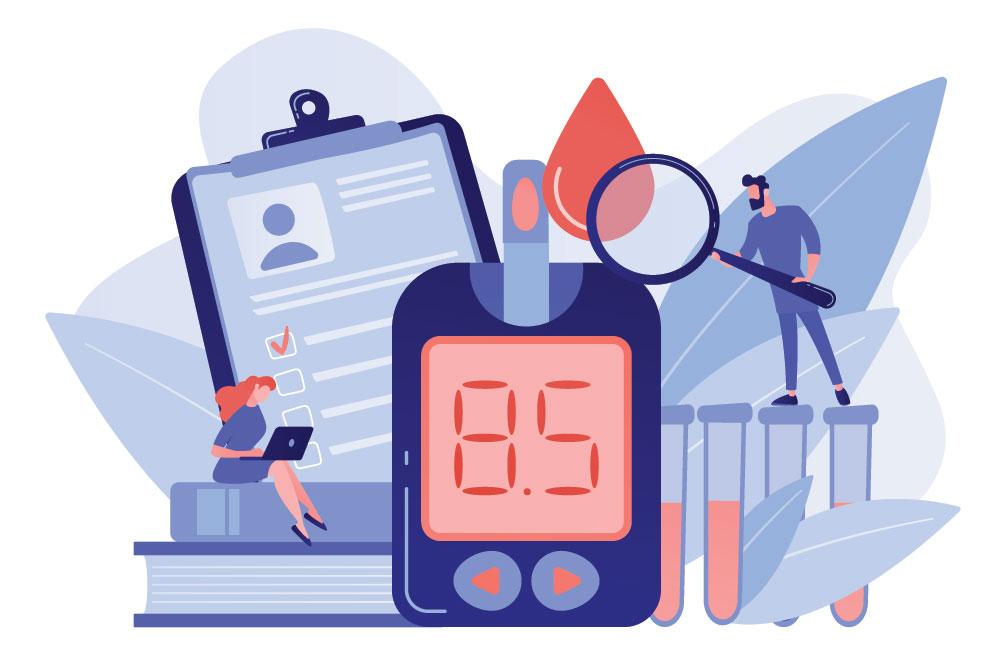Last updated on July 28th, 2023
Diabetes awareness and management efforts have increased globally. Still, more efforts are needed. In 2019 the diabetes global prevalence impacted 463 million people. It is expected to reach 578 million people by 2030. With the same growing trends by 2045, 700 million people shall be affected by diabetes [1]. Read to know about what are the main causes of diabetes?
Thus, proper awareness regarding diabetes and its management is essential. This can be done by exploring the detailed causes of diabetes.
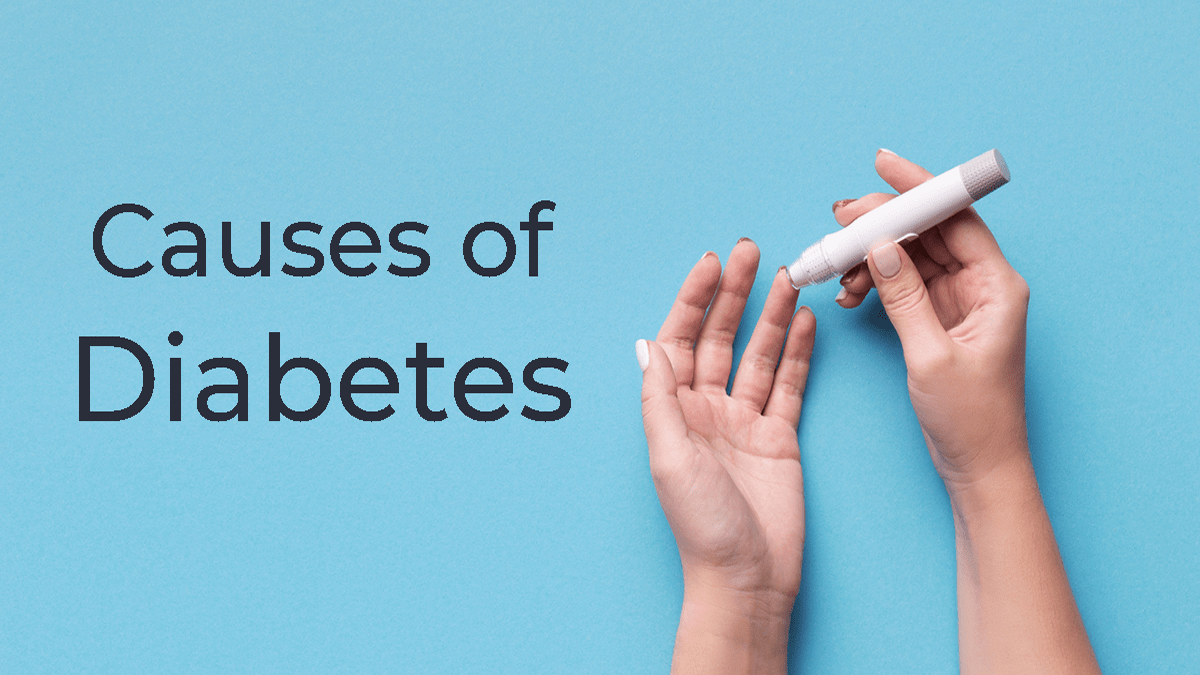

Diabetes in Brief
Glucose is released into the bloodstream after the digestion process. It is then absorbed by the body cells to release energy. Thus, blood maintains a level of glucose in it. To maintain proper blood glucose levels and to help cells in glucose absorption our body uses a hormone called insulin. Pancreas release insulin that helps in regulating blood glucose levels.
The blood glucose levels become abnormal when our body becomes insulin resistant, or when the pancreas cells fail to produce more insulin. Body cells also fail to absorb glucose from the bloodstream. This results in increased levels of blood glucose than the normal level. This condition where the blood glucose levels become higher is known as diabetes.
Summary:
Resistant to insulin or decrease production of insulin causes blood glucose levels to remain higher (above 180 mg/dL) resulting in diabetes.
Normal Blood Sugar Levels
- less than 100mg/dL after not eating for at least eight hours (fasting), and
- less than 140mg/dL two hours after eating.
Abnormal Blood Sugar Levels
The abnormal blood sugar levels are
- more than 130mg/dL before a meal (fasting), and
- more than 190mg/dL two hours after eating.

Role of Insulin
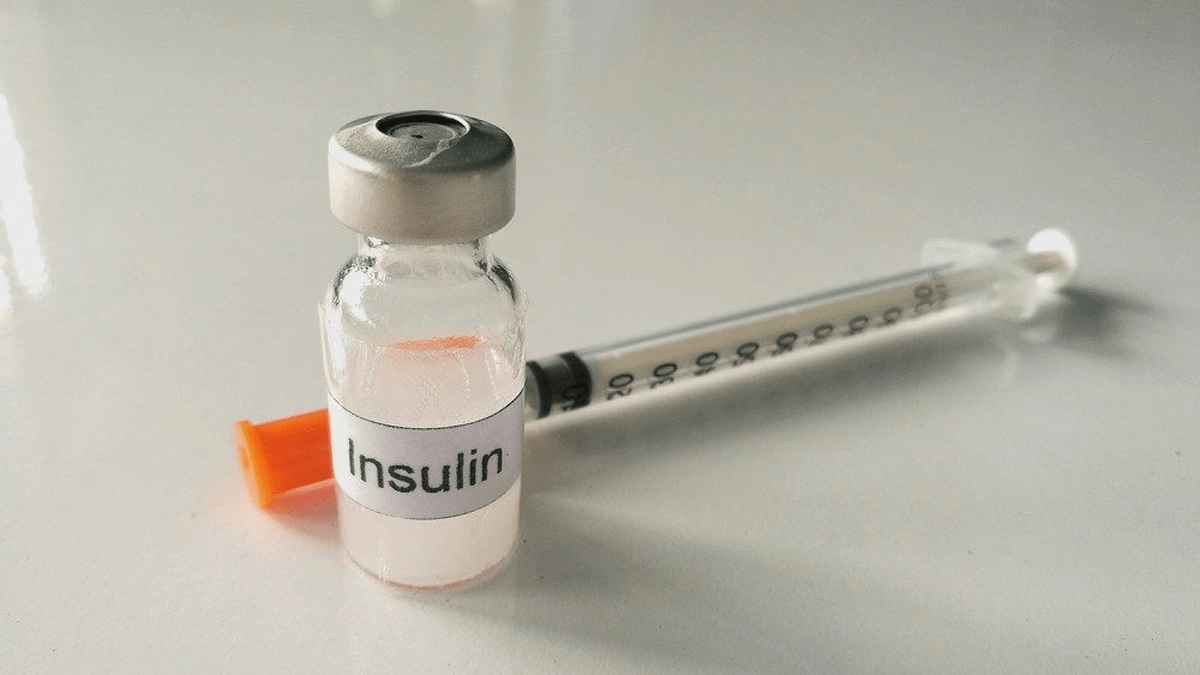
The beta cells of the pancreas produce insulin. This hormone helps in unlocking the glucose channels of the body cells. As glucose channels are unlocked, glucose can enter the body cells from the blood. In this way, insulin regulates blood glucose levels.
When the body becomes insulin resistant the blood glucose is not able to enter in proper quantity into the body cells. This increases blood glucose levels. This causes the pancreas to release more insulin to maintain the blood sugar level. It then may damage the pancreatic cells. All these conditions lead to increased blood sugar and result in diabetes.
Summary:
Insulin regulates blood glucose levels and helps in its absorption by body cells. Insulin resistance or deficiency causes diabetes.
Role of Glucose
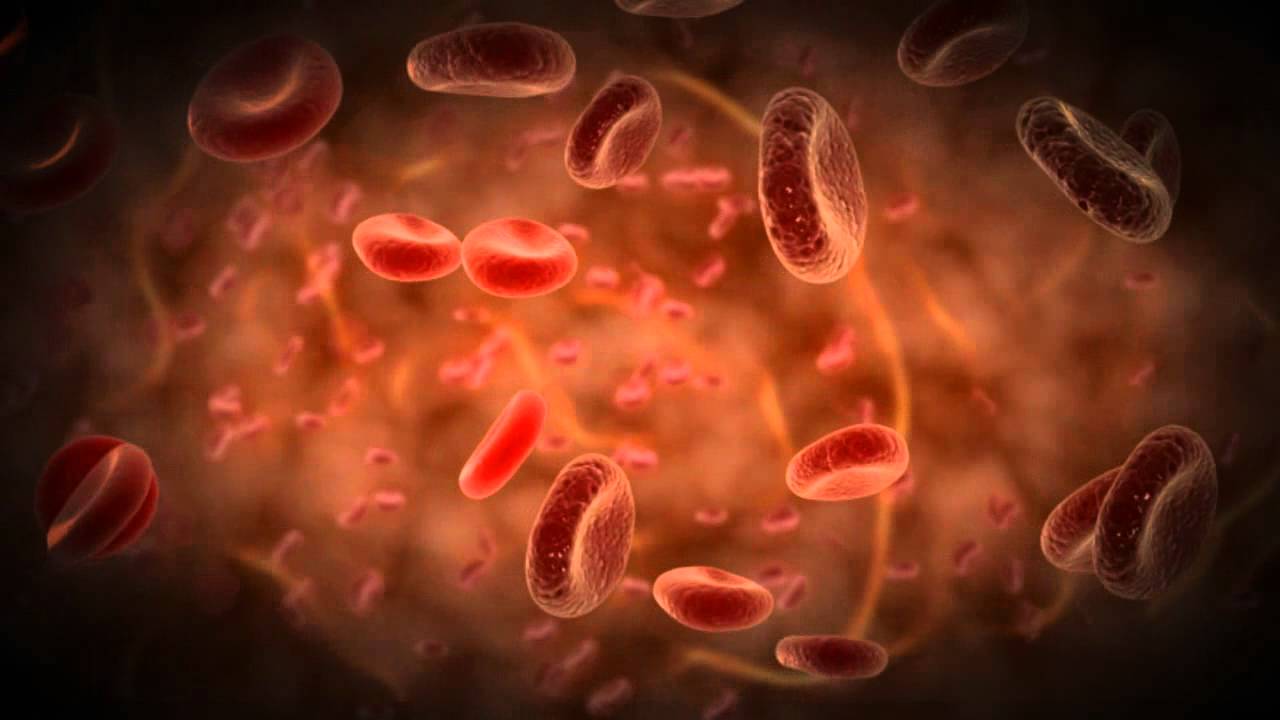
Glucose is the energy currency of our body. The food we eat is broken down and glucose is released into the bloodstream. The body cells absorb this blood glucose. During cellular respiration processes of the cells, the glucose absorbed is burnt by mitochondria to release energy ATP molecules.
Also Read: 10 Best Glucometers in India for 2022
Insulin regulates and helps in the absorption of glucose. In diabetes, the blood glucose levels are higher than normal levels of glucose.
High blood glucose levels (value greater than 130mg/dL) for a longer period can increase your risk for:
- Heart disease,
- Kidney disease,
- Nerve damage,
- Foot pain & ulcers,
- An eye disease called retinopathy.
Summary:
Abnormal blood glucose levels are above 180 mg/dL. Diabetes, heart & kidney diseases are complications if left untreated.
Type & Causes of Diabetes
Diabetes is of three types:
- Type 1 Diabetes: Due to deficiency of insulin
- Type 2 Diabetes: When the body becomes resistant to insulin
- Gestational Diabetes: Rise in blood sugar in pregnancy.
Also Read: Early Signs of Diabetes
Causes of Pre-diabetes
Pre-diabetic condition is the condition when you are not diabetic and yet the blood glucose levels are higher than the normal levels. You are more prone to get pre-diabetes under the following conditions:
- Obese or overweight
- Your ethnicity is African American, Native American, Latino or Pacific Islander
- Diagnosed with gestational diabetes
- An unhealthy diet including drinking sugary beverages, eating red meat
- Suffering from polycystic ovary syndrome (PCOS)
Pre-diabetic blood sugar levels: Unless you don’t have risk factors like obesity, the genetic history of diabetes, and other health ailments, a blood sugar level from 140 to 199 mg/dL (7.8 to 11.0 mmol/L ) is an indication of pre-diabetes.
Not taking proper care in pre-diabetic conditions can lead to diabetes. Thus, pre-diabetes is an early warning sign of the disease.
Also Read: Indian Diabetic Diet Chart
Summary:
Pre-diabetic condition is when the blood sugar levels are in the range of 140 to 199 mg/dL. It is an early warning sign of diabetes and requires proper care.
Causes of Type 1 Diabetes
The other name of Type 1 Diabetes is juvenile diabetes because it is more common in children. It is a chronic condition where the pancreases are unable to produce a sufficient amount of insulin. It usually occurs during childhood or adolescence.
Type-1 diabetes causes:
- Auto-immune disease: When the body’s immune system mistakenly attacks the insulin-producing beta cells of the pancreas.
- Bacterial or viral infection can disturb the body immune system and can lead to diabetes
- Genetic factors: Variations in HLA-DQA1, HLA-DQB1, HLA-DRB1 genes that help in immune system response can cause diabetes [2].
- Chemical toxins: Certain chemical toxins alter the immune response and damage beta cells of the pancreas leading to diabetes.
Summary:
The deficiency of insulin is the major cause of type-1 diabetes.
Causes of Type 2 Diabetes
Type 2 Diabetes is a medical condition that affects the way your body metabolizes or processes blood sugar. Symptoms of type 2 diabetes develop gradually.
- In type-2 diabetes, the cells are unable to absorb the proper amount of glucose from blood due to cells becoming resistant to insulin.
- This increases blood glucose levels.
- Higher glucose levels signal the pancreas to produce more insulin
- This causes beta cells of the pancreas to grow weak and thus results in insulin deficiency.
Thus, the blood sugar levels increase, and over time it impacts the circulatory system and nervous system.
Several factors lead to type 2 diabetes. Still, the exact cause of type-2 diabetes is not clear. The possible causes are:
- Obesity and an inactive lifestyle
- Higher production of glucose in the liver
- Genetic influence and hereditary
- Beta-cell dysfunction in the pancreas
Summary:
Improper lifestyle, overeating, obesity, and genetic factors lead to type-2 diabetes.
Gestational Diabetes Causes
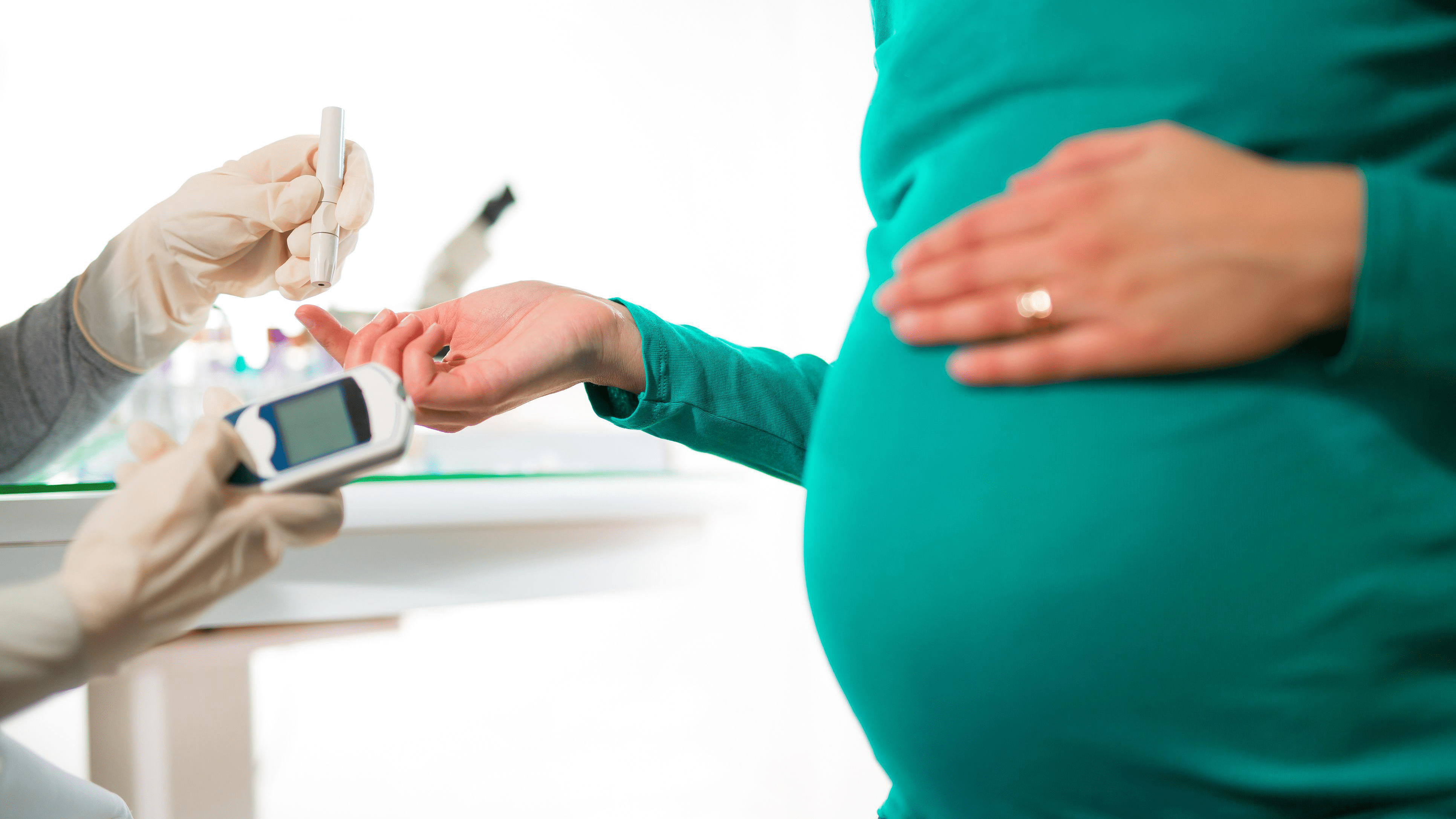
Gestational diabetes is a condition in which the blood glucose levels of a woman become high during pregnancy.
During pregnancy, the placenta produces hormones that help to build up glucose in the body. If the body is unable to produce sufficient insulin to handle this condition, the blood sugar levels begin to rise. This finally leads to gestational diabetes.
Causes:
- Obesity and overweight
- Excessive weight gain during pregnancy
- Polycystic ovary syndrome causes weight gain
- Genetic history of diabetes
Summary:
During pregnancy, more fat accumulates and with more weight gain blood glucose levels may raise leading to gestational diabetes.
Factors that Lead to Diabetes
In the report on global diabetes prevalence it id found that urban people have more diabetes than rural areas [1]. The main factor contributing to the rise in the urban area is an improper lifestyle, improper diet, stress, and less physical activities.
A person is more likely to be diagnosed with diabetes if he/she has:
- Insulin resistance – With insulin resistance, the body cells don’t respond to insulin effectively. Due to this, glucose can’t move to cells and starts building up in the blood.
- Sedentary lifestyle – Inactive lifestyle without enough exercise leads to weight gain and health risks like diabetes, high blood pressure, and heart disease.
- Age – As age increases the risk of diabetes increases. It is mainly common after 45 years.
- Ethnic background – Ethnic groups like Hispanic/Latino Americans, Asian-Americans, and Pacific Islanders are more prone to diabetes.
Thus, to remain healthy and to manage diabetes appropriately it is essential that you follow the proper diet plan, maintain a healthy lifestyle, manage weight and follow proper medication on time.
Summary:
Lifestyle, weight, age, and ethnic background are key factors that pose risk to the cause of diabetes.
Complications
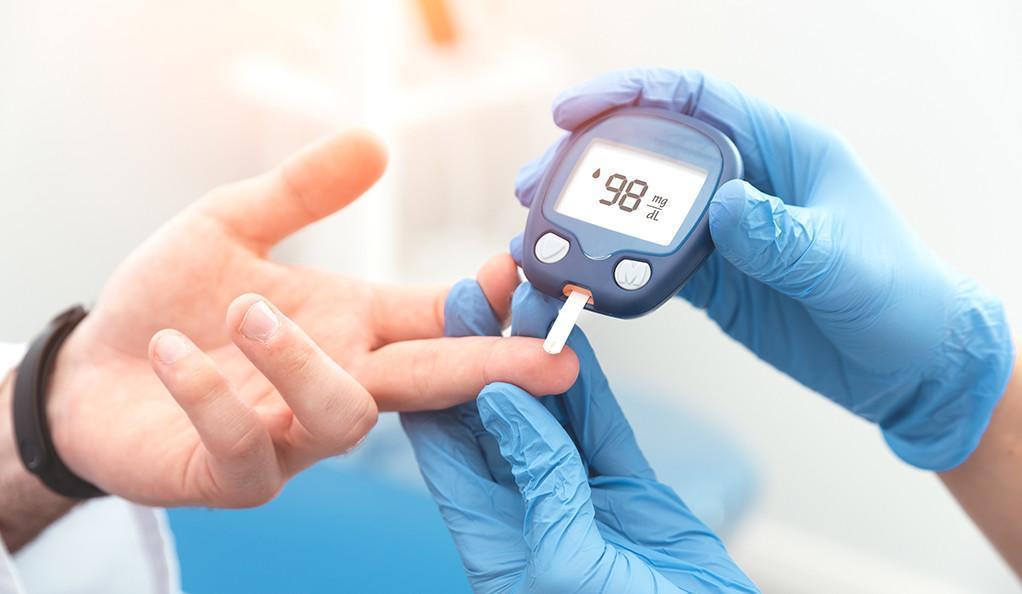
Consistent high blood glucose levels can lead to serious complications like:
- Cardiovascular (heart) disease – Diabetes affects the heart vessels and can cause serious complications like coronary artery disease, stroke, and narrowing of arteries (atherosclerosis).
- Neuropathy (nerve damage) – Very high blood glucose damages the nerves throughout the body and can lead to problems with digestion, amputations, and erectile dysfunction. Peripheral neuropathy (nerve damage in the extremities especially feet) can cause tingling, numbness, loss of feeling, burning, or pain.
- Foot ulcers & foot pain – The foot ulcers may require treatment and minor surgeries. Foot pain may cause trouble while walking. Prolonged foot ulcers & pain can even in the worst cause lead to leg amputations.
- Retinopathy (eye disease) – Most people with high levels of blood glucose can develop serious eye problems like cataracts, glaucoma. Diabetes can damage the retina vessels, potentially leading to reduced vision or blindness.
- Nephropathy (kidney damage) – Diabetes can damage the tiny blood vessel clusters of kidneys that filter waste from the blood. Under serious conditions, it might lead to kidney failure or irreversible end-stage kidney disease.
Also Read: Is Banana Good For Diabetes?
Takeaway
Once diagnosed with diabetes, there is no going back. But remember managing it can help you to reverse diabetes. Therefore, avoid a sedentary lifestyle, eat healthy food and perform exercise regularly. Focus on those diabetes factors which are in your control like obesity, stress.
Remember, prevention is always better than cure.
Also Read: Glycomet gp2 Uses
FAQ’s:
Is diabetes insipidus related to type-1 and type-2 diabetes?
Are people with diabetes at more risk of infections?
Answer: Yes people with diabetes are at more risk of bacterial infections like nail infection, boil, and ulcers. They are also prone to fungal skin infections.
Can a person have both type-1 and type-2 diabetes?
Answer: Yes, a person can have both diabetes. Children who have type-1 diabetes can also over time develop insulin resistance leading to type-2 diabetes.
What are the proper weight values for females so that they are not obese?
Answer: For that, you need to calculate body mass index (BMI) and refer to its chart. BMI values regarded as overweight are within the range of 25 to 29.9. While females with a BMI value greater than 30 are considered obese. The normal BMI value range for females above 18 years is between 18.5 to 24.9.
References:
[1]. Saeedi, P., Petersohn, I., Salpea, P., Malanda, B., Karuranga, S., Unwin, N., … & IDF Diabetes Atlas Committee. (2019). Global and regional diabetes prevalence estimates for 2019 and projections for 2030 and 2045: Results from the International Diabetes Federation Diabetes Atlas. Diabetes research and clinical practice, 157, 107843.
[2]. Erlich, H., Valdes, A. M., Noble, J., Carlson, J. A., Varney, M., Concannon, P., … & Moonsamy, P. (2008). HLA DR-DQ haplotypes and genotypes and type 1 diabetes risk: analysis of the type 1 diabetes genetics consortium families. Diabetes, 57(4), 1084-1092.
Last Updated on by Dr. Damanjit DuggalDisclaimer
This site provides educational content; however, it is not a substitute for professional medical guidance. Readers should consult their healthcare professional for personalised guidance. We work hard to provide accurate and helpful information. Your well-being is important to us, and we value your feedback. To learn more, visit our editorial policy page for details on our content guidelines and the content creation process.

 English
English
